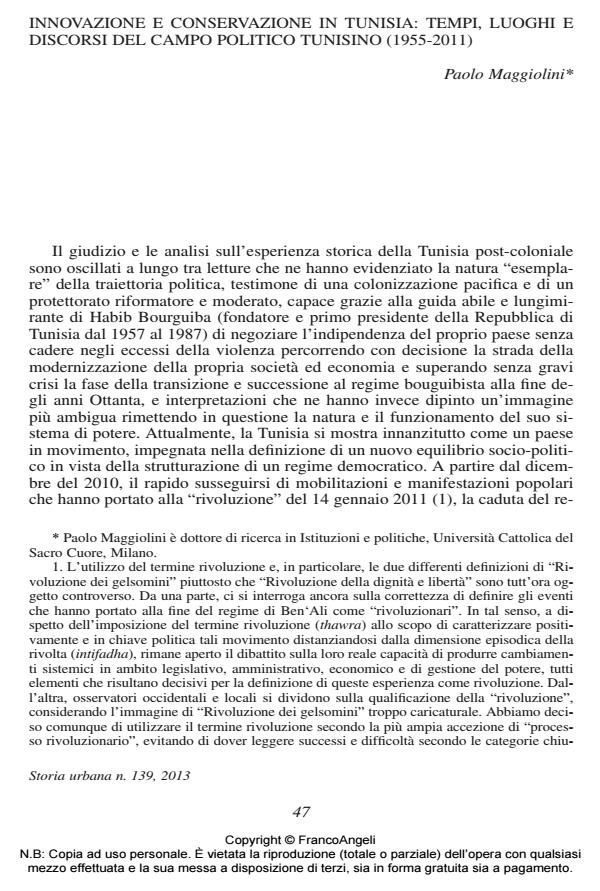Innovation and Conservation in Tunisia: Times, Places and Discourses in Tunisian Politics (1955-2011)
Journal title STORIA URBANA
Author/s Paolo Maggiolini
Publishing Year 2013 Issue 2013/139
Language Italian Pages 47 P. 47-93 File size 2853 KB
DOI 10.3280/SU2013-139003
DOI is like a bar code for intellectual property: to have more infomation
click here
Below, you can see the article first page
If you want to buy this article in PDF format, you can do it, following the instructions to buy download credits

FrancoAngeli is member of Publishers International Linking Association, Inc (PILA), a not-for-profit association which run the CrossRef service enabling links to and from online scholarly content.
The paper analyzes the historical development of the Tunisian political field from the second half of the last century to the fall of the Ben ‘Ali regime in order to highlight its functioning, strengths and vulnerabilities in relation to the recent events occurring in the country. The study of the relationship between the territory, its capital and the state-party system helps to understand the basis on which the Tunisian political field was founded and defined. The success of the protest movement against the Ben ‘Ali regime has in fact been achieved through a selective re-appropriation of public places, their reconfiguration within a "liberated" and "conquered" public sphere, the creation of "new" spaces, and, finally, the exploitation of symbolic capital. Accordingly, establishing new relationships between territory, society and political spheres, the revolution manifested its existence and legitimacy as a socio-political actor, expressing its will to obtain and realize real changes in the running and nature of the state and Tunisia’s political field.
Keywords: North Africa Tunisia Arab Spring Political Field
Paolo Maggiolini, Innovazione e conservazione in Tunisia: tempi, luoghi e discorsi del campo politico tunisino (1955-2011) in "STORIA URBANA " 139/2013, pp 47-93, DOI: 10.3280/SU2013-139003